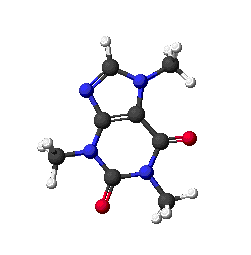
Chemistry
Chapter 6: 1-3

Homework
Electrons, Orbitals, and Electromagnetic Radiation
Chapter 6: 1-3 Homework
- Reading Preparation
- WebLecture
- Study Activity
- Preparation work for chat
- Online Quiz
- Lab Instructions
Reading Preparation
Textbook assignment: Read Kotz and Triechel, Chemistry and Chemical Reactivity Chapter 6 Sections 1 to 3.
Study Notes
6.1 Electromagnetic radiation (EM) is light, and light is a wave. The fundamental relationship of all waves is described by speed of wave = frequency * wavelength.
6.2 The energy carried by a single photon of light depends on the frequency (which in turn depends on the speed and wavelength): E = h*frequency = h * speed/wavelength, where h is Planck's constant.
6.3 When electrons change energy states and move between orbitals around an atom, they emit or absorb light with energy equal to the change. Bohr related the change to the energy level by the Rydberg constant, R. Electrons in the ground state have the lowest amount of energy possible. Electrons in excited states have absorbed the precise amount of energy required to make the jump to their excited state.
Important Equations and Conversion Factors
| Principle | Formula | Notes |
|---|---|---|
| Light Wave Relationships | c: speed of wave λ: wavelength ν: frequency | |
| Planck Equation | E: photon energy h: Planck constant ν: frequency c: speed of light λ: wavelength | |
| Rydberg Equation |
λ: wavelength
R: Rydberg constant nf: Final energy level ni: Initial energy level | |
| Bohr Energy for Hydrogen electrons |
En: Electron energy at level n
h: Planck constant R: Rydberg constant c: speed of light n: energy level |
Web Lecture
Read the following weblecture before chat: Electromagnetic Radiation and Photons
Study Activity
Videos for Chapter 6: The Structure of Atoms
Review the Videos at Thinkwell Video Lessons.
- Under "ATOMS, MOLECULES, AND IONS: Atomic Structure"
- Modern Atomic Structure
- Under "MODERN ATOMIC THEORY: Electromagnetic Radiation and the Idea of Quantum"
- The Wave Nature of Light
- Absorption and Emission
- The Ultraviolet Catastrophe
- The Photoelectric Effect
- The Bohr Moddel
Simulation activity
Use the simulation below to explore what happens when you change the wavelength and tension on a string. Be sure that you understand how speed, wavelength, and frequency are related.
Chat Preparation Activities
- Essay question: The Moodle forum for the session will assign a specific study question for you to prepare for chat. You need to read this question and post your answer before chat starts for this session.
- Mastery Exercise: The Moodle Mastery exercise for the chapter will contain sections related to our chat topic. Try to complete these before the chat starts, so that you can ask questions.
Chapter Quiz
- There is no chapter quiz YET.
Lab Work
LAB #4 GUIDED INQUIRY: Measuring reaction rates for photosensitive reactions -- Phase I
Working with your teacher and classmates, design a set of standard concentrations of iodine to act as a reference, and propose method to calibrate concentrations of iodine solution matching your standards. You will use the standards you create to measure the change in concentration during timed reactions of oxalate and iodine conducted under different amounts of light. You will need to identify the materials required for your solutions, and a set of useful concentrations, and describe how you will generate each concentration level.
References:
- IGHCE Lab 17.1 Photochemical Reaction of Iodine and Oxalate
- HSCMK IX-1: Photochemical Reaction of Iodine and Oxalate]
- APGIE Investigation 2: How Can Color Be Used to Determine the Mass Percent of Copper in Brass?
- No Alternative Lab exists for this exercise.
© 2005 - 2024 This course is offered through Scholars Online, a non-profit organization supporting classical Christian education through online courses. Permission to copy course content (lessons and labs) for personal study is granted to students currently or formerly enrolled in the course through Scholars Online. Reproduction for any other purpose, without the express written consent of the author, is prohibited.